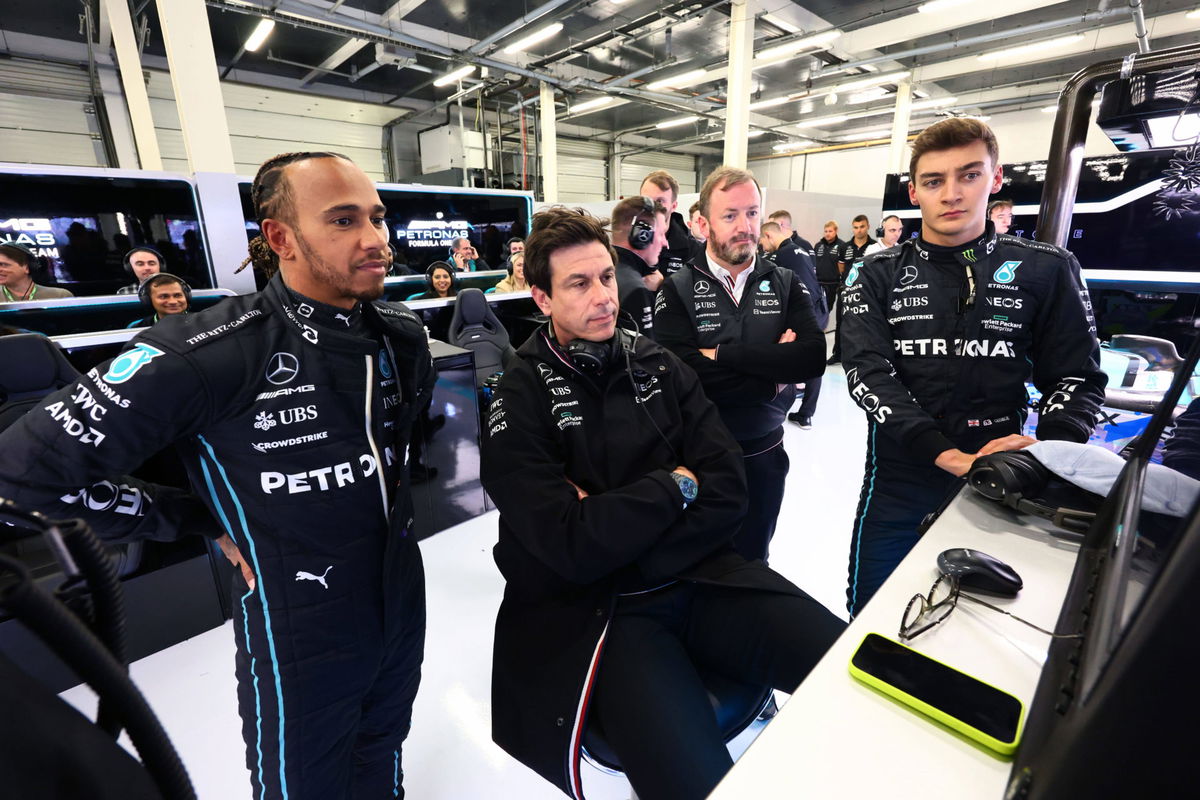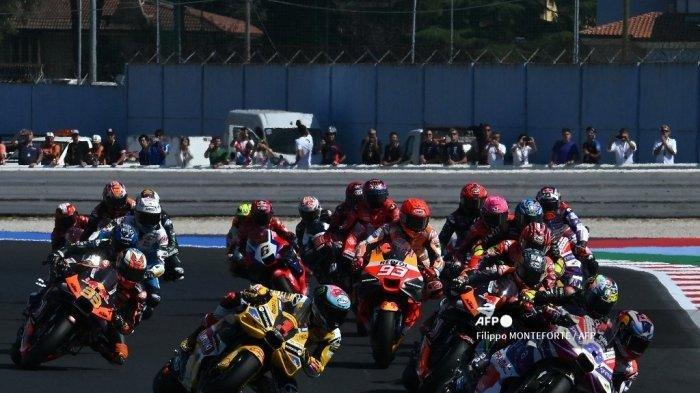Formula 1 Regulation Changes: The Lewis Hamilton Factor

Table of Contents
Aerodynamic Regulations and the Hamilton Dominance
Hamilton's success, particularly during his Mercedes dominance, was often attributed to the team's mastery of aerodynamic performance. Their cars, renowned for their exceptional downforce and cornering speed, prompted the FIA to implement several significant changes to the aerodynamic regulations. These changes aimed to reduce downforce, improve overtaking, and make the racing more exciting.
Specific aerodynamic regulations introduced include:
- Bargeboard Restrictions: Substantial modifications were made to the design and complexity of bargeboards, aiming to limit their impact on downforce generation.
- Diffuser Changes: The size and shape of diffusers were altered to decrease their efficiency in producing downforce.
- Bodywork Simplifications: Regulations were implemented to streamline the car's bodywork, reducing the overall aerodynamic advantage gained through complex designs.
These changes had a cascading effect on various aspects of racing:
- Reduced Overtaking Opportunities: While intended to improve overtaking, some argue these changes initially reduced overtaking opportunities as cars became less sensitive to dirty air.
- Impact on Qualifying Performance: The changes affected qualifying performance, leading to closer lap times and increased uncertainty regarding grid positions.
- Effect on Tire Degradation: The altered aerodynamic balance influenced tire wear and degradation strategies, adding another layer of complexity to race management.
Engine Regulations and the Pursuit of Parity
Mercedes' engine dominance during the V6 Turbo Hybrid era, largely fueled by Hamilton's exceptional driving, also led to significant revisions in engine regulations. The FIA continuously sought to close the performance gap between engine manufacturers, promoting a more level playing field.
The evolution of engine formulas included:
- Stricter Fuel Flow Regulations: Limits were imposed on fuel flow rates to reduce engine power output and increase the challenge of managing fuel consumption during races.
- Token System for Development: A token system controlled the extent to which teams could upgrade their power units, restricting excessive development and cost escalation.
- Standardization of Certain Components: Some engine components were standardized to reduce the disparity in performance between manufacturers.
The impact of these engine regulation changes is evident in:
- Improved Fuel Efficiency: Teams focused on optimizing fuel consumption, resulting in more strategic racing and greater driver input in managing fuel usage.
- Changes in Engine Reliability: The increased scrutiny and restrictions led to a greater focus on engine reliability, reducing the number of race-ending failures.
- Effect on Development Costs for Teams: The tighter regulations aimed at curbing the escalating development costs associated with cutting-edge engine technology.
The Impact on the Sporting Regulations
Hamilton's influence extended beyond aerodynamic and engine regulations; his presence also shaped sporting regulations. Controversial incidents and his aggressive driving style prompted the FIA to clarify and modify certain rules.
Significant rule changes include:
- Changes in Penalty Points Systems: The penalty points system was refined to address repeat offenses and inconsistencies in penalty applications.
- Modifications to Qualifying Formats: The qualifying format has undergone numerous changes over the years, partly influenced by the need to create more exciting qualifying sessions and better reflect race pace.
- Alterations to Race Procedures: Race procedures, including the management of safety cars and virtual safety cars, have been updated to improve clarity and consistency.
The long-term implications of these changes include:
- Improved Consistency and Fairness: The aim of these rule modifications is to enhance the fairness and consistency of the sport, ensuring a more level playing field for all drivers and teams.
- Increased Scrutiny on Driver Conduct: The changes reflect an increasing focus on driver conduct and the need for sporting regulations to address aggressive driving styles and on-track incidents.
The Future of F1 Regulations and Hamilton's Legacy
Looking ahead, the pursuit of closer competition will likely continue to drive future Formula 1 regulation changes. The increasing focus on sustainability and the introduction of sustainable fuels will significantly influence future regulations. Hamilton's legacy will undoubtedly be woven into the fabric of these future developments, reminding the FIA of the need for continuous adaptation and balance. His impact on the sport's evolution is undeniable, pushing the boundaries of both on-track performance and off-track regulation.
Conclusion: Understanding the Formula 1 Regulation Changes Shaped by Lewis Hamilton
Lewis Hamilton's remarkable career has profoundly shaped Formula 1 regulation changes. His success, while spectacular, highlighted the need for the FIA to continuously refine the rules to ensure a more level playing field and enhance the overall spectacle of the sport. Understanding these Formula 1 regulation changes is crucial for fans, analysts, and the sport's future. To delve deeper into this fascinating aspect of Formula 1 history, we encourage you to explore further resources and articles on the evolution of Formula 1 regulations and their impact on the sport's competitiveness. Continue researching the intricacies of Formula 1 regulation changes to gain a deeper appreciation of this dynamic and ever-evolving sport.

Featured Posts
-
 Texas Flash Flood Warning Heavy Rainfall And Flooding Expected
May 26, 2025
Texas Flash Flood Warning Heavy Rainfall And Flooding Expected
May 26, 2025 -
 George Russells Mercedes Future Toto Wolff Drops Another Clue
May 26, 2025
George Russells Mercedes Future Toto Wolff Drops Another Clue
May 26, 2025 -
 Jenson Fw 22 An Extended Look At The New Collection
May 26, 2025
Jenson Fw 22 An Extended Look At The New Collection
May 26, 2025 -
 Moto Gp Inggris 2025 Hasil Fp 1 Jadwal Race Dan Siaran Langsung Di Trans7
May 26, 2025
Moto Gp Inggris 2025 Hasil Fp 1 Jadwal Race Dan Siaran Langsung Di Trans7
May 26, 2025 -
 The Disappearance Methods Of Investigation And Prevention
May 26, 2025
The Disappearance Methods Of Investigation And Prevention
May 26, 2025
Latest Posts
-
 Learn About Bangladesh With Bangladeshinfo Com
May 27, 2025
Learn About Bangladesh With Bangladeshinfo Com
May 27, 2025 -
 Almanacco 8 Marzo Cosa Accadde Oggi Compleanni Famosi E Proverbio Del Giorno
May 27, 2025
Almanacco 8 Marzo Cosa Accadde Oggi Compleanni Famosi E Proverbio Del Giorno
May 27, 2025 -
 Your Go To Source For Bangladesh Information Bangladeshinfo Com
May 27, 2025
Your Go To Source For Bangladesh Information Bangladeshinfo Com
May 27, 2025 -
 Sabato 8 Marzo Almanacco Giornaliero Eventi Storici Compleanni E Proverbio
May 27, 2025
Sabato 8 Marzo Almanacco Giornaliero Eventi Storici Compleanni E Proverbio
May 27, 2025 -
 Bangladeshinfo Com Stay Updated On Bangladesh
May 27, 2025
Bangladeshinfo Com Stay Updated On Bangladesh
May 27, 2025
